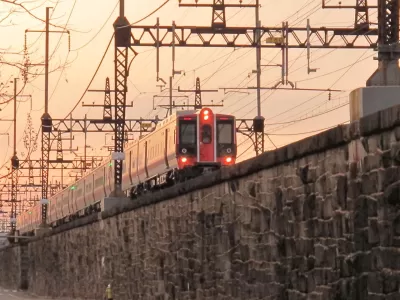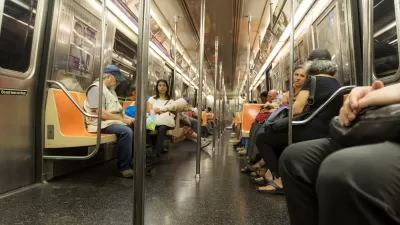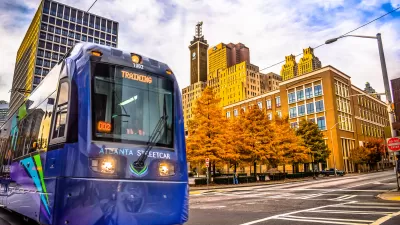Investing in technology and promoting innovation in the transportation sector can further the Biden administration's goals of reducing carbon emissions and improving public transit.

Despite the head-spinning advances in technology in the last few decades, write Tiffany Chu and Daniel Ramot in Bloomberg CityLab, "only a small fraction of public transportation budgets are allocated to innovation and technology, lagging significantly behind other sectors." This, argue the authors(who are also "founders of transit technology companies whose software powers public transportation systems in hundreds of cities across the world"), has hindered the development of effective and equitable transit systems. The federal government should, in their opinion, "radically rethink its approach" to transportation funding and support local agencies in implementing innovations that will improve service.
"If we want to make real progress in creating a new vision for American mobility, the Biden Administration and Congress will need to stop funding transportation like it’s the 1980s. It is time to move past our excessive focus on large highway capital projects and remove limitations that constrain how cities and rural communities deploy public transportation."
Chu and Ramot include several recommendations that they believe can help us "plan smarter transit networks, build safer streets, and launch more nimble services designed to immediately enhance transportation for those who need it most," which include creating dedicated funding to "drive innovation," tying funding to concrete outcomes, and funding transit operations as well as equipment.
FULL STORY: Fixing Transit Is More Than Just Infrastructure

Trump Administration Could Effectively End Housing Voucher Program
Federal officials are eyeing major cuts to the Section 8 program that helps millions of low-income households pay rent.

Planetizen Federal Action Tracker
A weekly monitor of how Trump’s orders and actions are impacting planners and planning in America.

Ken Jennings Launches Transit Web Series
The Jeopardy champ wants you to ride public transit.

Washington Legislature Passes Rent Increase Cap
A bill that caps rent increases at 7 percent plus inflation is headed to the governor’s desk.

From Planning to Action: How LA County Is Rethinking Climate Resilience
Chief Sustainability Officer Rita Kampalath outlines the County’s shift from planning to implementation in its climate resilience efforts, emphasizing cross-departmental coordination, updated recovery strategies, and the need for flexible funding.

New Mexico Aging Department Commits to Helping Seniors Age ‘In Place’ and ‘Autonomously’ in New Draft Plan
As New Mexico’s population of seniors continues to grow, the state’s aging department is proposing expanded initiatives to help seniors maintain their autonomy while also supporting family caregivers.
Urban Design for Planners 1: Software Tools
This six-course series explores essential urban design concepts using open source software and equips planners with the tools they need to participate fully in the urban design process.
Planning for Universal Design
Learn the tools for implementing Universal Design in planning regulations.
Heyer Gruel & Associates PA
Ada County Highway District
Institute for Housing and Urban Development Studies (IHS)
City of Grandview
Harvard GSD Executive Education
Toledo-Lucas County Plan Commissions
Salt Lake City
NYU Wagner Graduate School of Public Service





























